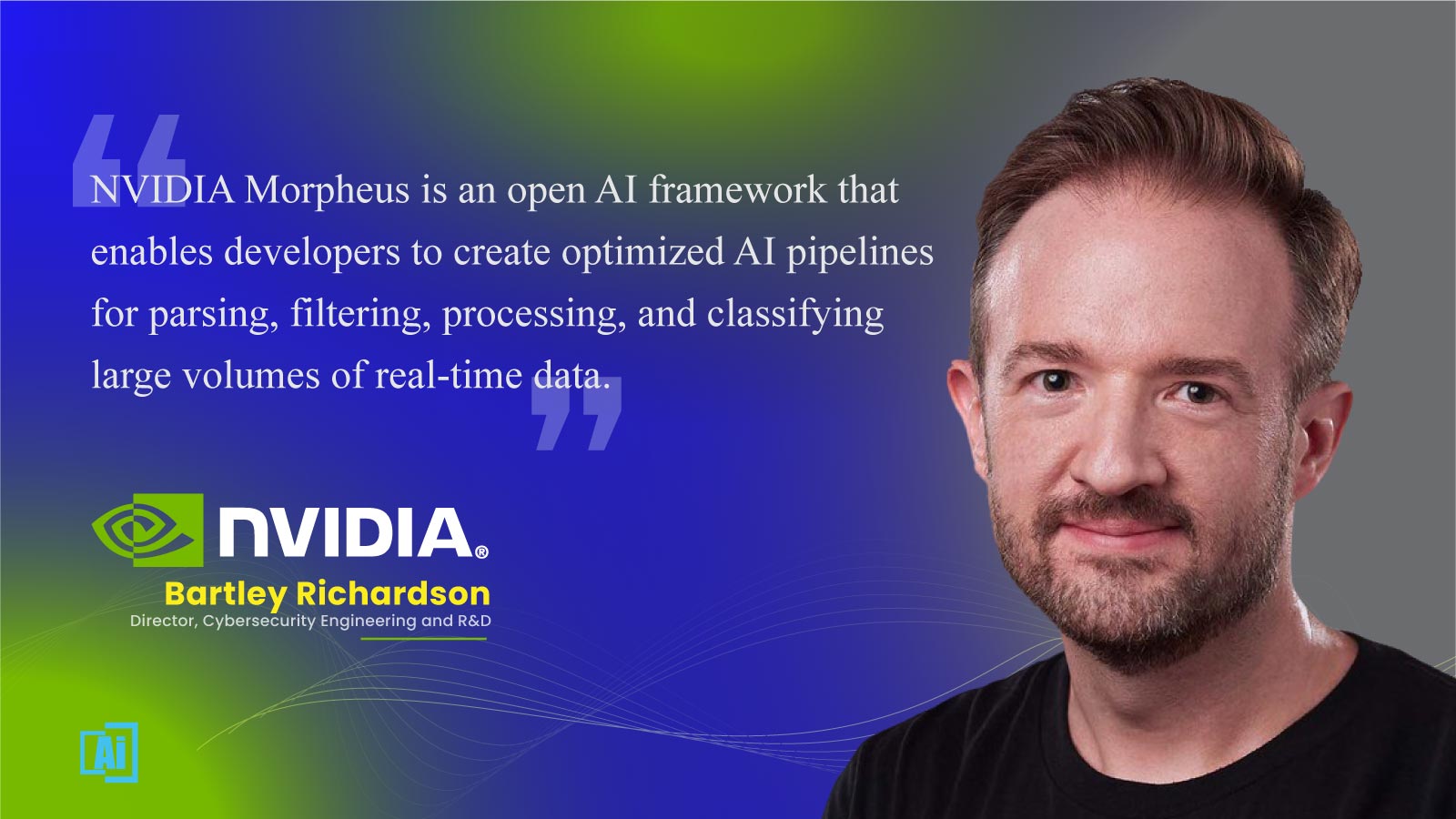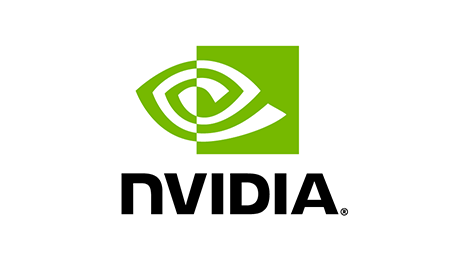AiThority Interview with Bartley Richardson, Director, Cybersecurity Engineering and R&D at NVIDIA

Please tell us about your role and the technology you handle at NVIDIA.
As the director of cybersecurity engineering at NVIDIA, I lead a team that creates new AI frameworks that can be leveraged to address the cybersecurity challenges of the future – at a scale that cannot be achieved with traditional methods.
NVIDIA has done some remarkable work in the AI and Automation domains. Could you specifically highlight your AI work at NVIDIA?
NVIDIA’s work in AI is transforming 100 trillion dollars’ worth of industries – from gaming to healthcare to transportation – and cybersecurity – making a profound impact on society. We offer a rich set of AI frameworks for developers to create solutions that enable numerous AI workflows that are used across all industries – for example, intelligent virtual assistants, natural language processing, recommender systems, smart cities, and more.
The work my team does is focused on cybersecurity. We believe that at its core, cybersecurity is a data problem. The explosion of data and connected devices, which are growing exponentially every year, has led to increased cybersecurity risk. In fact, cyberattacks are also growing. Many organizations are implementing a zero trust strategy to combat attacks, but the requirements of continuous validation exacerbate the data problem. It’s challenging for traditional solutions to handle the massive scale required by zero trust architectures. AI-based solutions are the key to better cybersecurity.
Recommended: AiThority Interview with Riaz Raihan, President of Products & Engineering at Alida
What makes your approach to cybersecurity different from traditional methods used today?
Because enterprises are generating more data than they can collect and analyze, the vast majority of the data coming in goes untapped. Without visibility into this data, enterprises can’t build robust and rich models to enable them to detect deviations in their environment. The inability to examine this data leads to undetected security breaches, long remediation times, and ultimately huge financial issues for the company being breached.
Traditional cybersecurity pipelines – which run on CPU infrastructure, and rely on a fixed architecture — can’t keep up with the volume of network traffic generated today. They either inspect just a fraction of the packets (20%, on average), missing most threats. Or they rely on storing the data – often petabytes of data – hoping to analyze it “later”. On average, threats are detected 277 days after they originally infected a network. Imagine you’re studying a pride of lions seeking to understand nuanced behavior and interactions, but you only can observe them for two days a week. You’d miss an enormous amount of context and important information.
And yet this is still more observation (nearly 30%) than the amount of data an enterprise has visibility into.
Leveraging accelerated AI, organizations can analyze up to 100 percent of their data, and uniquely fingerprint every user, service, account and machine to detect anomalies, dramatically cutting down the time to detect cybersecurity threats.
Recommended: AiThority Interview with Lori Anne, Director of Product Development & Management at Verizon
Please tell us how Morpheus works and what are its industrial applications?
NVIDIA Morpheus is an open AI framework that enables developers to create optimized AI pipelines for parsing, filtering, processing, and classifying large volumes of real-time data. Essentially, it provides the capability for developers to create solutions that address cybersecurity concerns on a much larger scale than previously possible. And do it cost effectively.
Morpheus is comprised of many modules that can be connected in various ways. It allows developers to create entire pipelines that can address specific cybersecurity workflows or use cases – with minimal development effort.
As part of Morpheus, NVIDIA creates thes example workflows. We do this for a number of reasons. One is to show the power of the Morpheus SDK and show just how much raw data Morpheus can churn through and what state of the art accelerated cybersecurity processing looks like. Another reason is to help teach developers how to use the SDK. By creating these end-to-end examples, we give developers very tangible ways to start instantiating these workflows with the Morpheus SDK. These examples should not constrain a developer or a company. They’re not meant to cover everything but are a launching point.
If you like the examples the way they are written, you can take them and customize them for your organization’s application. Or you can use them as a jumping off point to get inspired. You can experience several of our prebuilt use cases with the free hands-on lab available in NVIDIA LaunchPad.
Morpheus is built with core NVIDIA AI technologies, including CUDA, RAPIDS – our compute engine, Triton Inference Server, TensorRT, and Cyber Log Accelerators – an open-source project that applies GPU processing to cybersecurity use cases.
Morpheus is data agnostic. It can consume data from log generators, your SIEM/SOAR, and even from your NVIDIA BlueField SmartNIC if you have them in your environment.
Recommended: Predictions Series 2022: AiThority Interview with Brian Jenkins, VP, Product at Librestream
What are some of the example use cases that can be enabled with NVIDIA Morpheus?
The use cases are virtually limitless, but some examples include:
- Digital fingerprinting: Uniquely fingerprint every user, service, account, and machine across the enterprise and then employ unsupervised learning to flag when user and machine activity patterns shift.
- Phishing detection: uses natural language processing AI model to analyze entire raw emails to classify them into ham, spam, or phishing categories
- Sensitive information detection: Find and classify leaked credentials, keys, passwords, credit card numbers, bank account numbers, and
- Crypto-mining malware detection: Catch anomalies by profiling behaviors to spot crypto-mining malware, which can result in malicious DNS traffic and overutilization of compute
- Fraud detection: Detect fraud at a fraction of the time and cost using graph neural networks—a capability that was not feasible before without massive amounts of labeled
- Ransomware detection: Identify and stop ransomware at the point of entry up to 3x faster with NVIDIA App Shield, the Morpheus cybersecurity pipeline, and NVIDIA BlueField as a high-speed, high-fidelity source.
Thank you, Bartley! That was fun and we hope to see you back on AiThority.com soon.
[To share your insights with us, please write to sghosh@martechseries.com]
Bartley Richardson is the Engineering Manager of Morpheus at NVIDIA. He leads a cross-discipline team that researches GPU-accelerated ML and DL techniques and engineers new frameworks to address the cybersecurity challenges of today and tomorrow. Prior to joining NVIDIA, Bartley was a technical lead and performer on multiple DARPA research projects, where he applied data science and machine learning algorithms at scale to solve large cybersecurity problems. He was also the principal investigator of an Internet of Things research project which focused on applying machine and deep learning techniques to large amounts of IoT data to provide intelligence value relating to form function, and pattern-of-life.
Since its founding in 1993, NVIDIA has been a pioneer in accelerated computing. The company’s invention of the GPU in 1999 sparked the growth of the PC gaming market, redefined computer graphics, ignited the era of modern AI and is fueling the creation of the metaverse. NVIDIA is now a full-stack computing company with data-center-scale offerings that are reshaping industry.


Comments are closed.